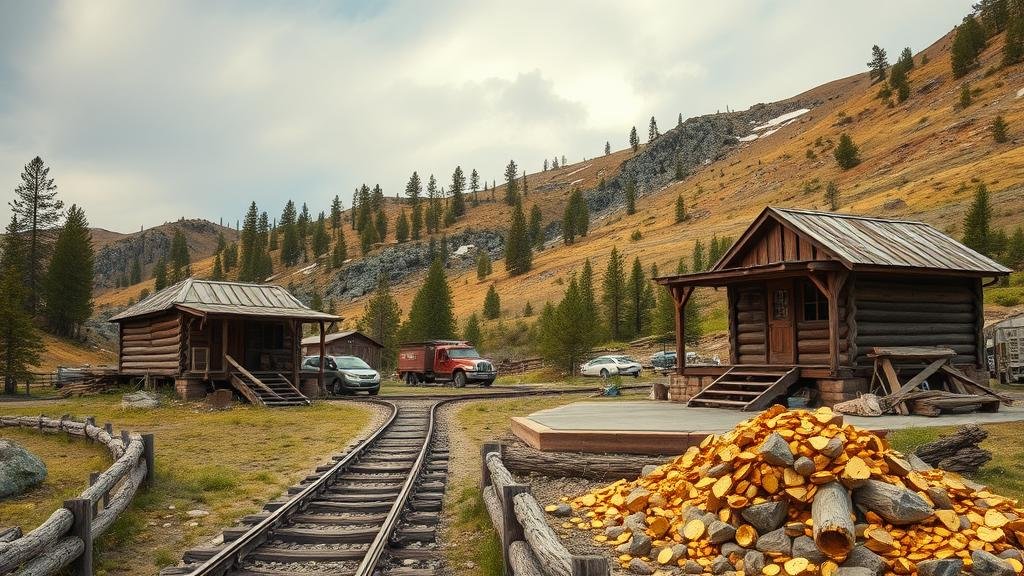Recovering Stashes of Gold in Old Mining Claims and Prospector Camps
Recovering Stashes of Gold in Old Mining Claims and Prospector Camps
The allure of gold mining has captivated adventurers and prospectors for centuries. But, as many abandoned mining claims and prospector camps dot the landscapes of former gold rush areas, a question arises: how can one effectively recover stashes of gold from these historical sites? This article explores the strategies, technology, legal frameworks, and real-world examples relevant to recovering gold from old mining claims.
The Historical Context of Gold Mining
Gold mining in the United States saw its peak during the 19th century, particularly during the California Gold Rush from 1848 to 1855. Similarly, other areas, such as the Klondike in Canada and the Witwatersrand in South Africa, became epicenters for gold mining. Many of these mining claims, once bustling with activity, have since been abandoned, leaving behind remnants of what could possibly be valuable stashes of gold.
According to data from the United States Geological Survey (USGS), a significant amount of gold remains in these old mining regions. In fact, it is estimated that over 80% of the gold potentially found in these areas has yet to be extracted, as modern techniques have improved upon the rudimentary methods used in the past.
Legal Considerations for Gold Recovery
Before initiating any recovery efforts, it is essential to understand the legal landscape surrounding mining claims. The General Mining Law of 1872 allows American citizens to stake claims on unclaimed land, but it is critical to verify the current status of any mining claim or prospecting site. Claim ownership can be complex, and unauthorized recovery can lead to significant legal repercussions.
- Research local mining laws and regulations before excavating.
- Obtain permits if necessary; these can include environmental and land use approvals.
For example, in California, prospectors must adhere to regulations pertaining to the use of equipment in national forests, which could involve limitations on the size and type of machinery used. Always consult with the Bureau of Land Management or local geological surveys to ensure compliance.
Techniques for Recovery
Recovering gold from old mining camps requires a combination of historical knowledge and modern technology. Here are some effective methods utilized in this pursuit:
1. Metal Detecting
Metal detecting is one of the most popular methods for locating gold in abandoned prospecting sites. Modern metal detectors designed for prospecting can distinguish between various metals and pinpoint gold nuggets buried beneath the surface. Many prospectors report finding significant amounts of gold in areas once processed by early miners, who may have missed finer gold particles.
2. Panning and Sluicing
Panning and sluicing are traditional, yet effective methods for recovering gold from streams associated with old mining camps. Prospectors may find fine gold flakes in the sediment. According to the Gold Prospectors Association of America, simple panning can yield between $10 to $100 a day for skilled prospectors, especially in areas with a rich history of gold production.
3. Geophysical Surveys
Using modern geophysical surveying methods, such as ground-penetrating radar (GPR) and electromagnetic surveys, can help prospectors identify buried minerals without disruptive excavation. These techniques offer a more macroscopic view of buried resources and allow for more targeted recovery efforts.
Case Studies: Successful Recoveries
- The Lost Dutchmans Mine: This legendary mine located in Arizona has attracted treasure hunters for decades. In 2017, a group of dedicated prospectors utilized advanced metal detecting technology and reportedly recovered several ounces of gold artifacts from the site, which was previously thought to have been completely mined.
- North Alaskan Gold Mining: In 2022, a small team of prospectors discovered an old mining camp in Alaska. Utilizing both historical maps and modern detection techniques, they recovered over 25 ounces of gold within just a few weeks, demonstrating the potential still existing in old sites.
Challenges and Considerations
While the potential for recovering gold from old mining claims exists, several challenges may arise. Prospectors should be aware of safety hazards associated with abandoned mines, such as unstable shafts and old equipment. Also, environmental impacts must be addressed, ensuring that any recovery efforts comply with regulations to safeguard surrounding ecosystems.
Also, it is prudent to engage with local prospecting communities. Networking with experienced treasure hunters can provide invaluable insights, tips, and information about specific areas previously overlooked by modern miners.
Actionable Takeaways
- Conduct thorough research on historical gold mining sites, including maps and past mining activities.
- Stay informed about local regulations governing mining and recovery operations.
- Use modern technology, including metal detectors and geophysical surveying tools, to increase recovery success rates.
- Engage with local prospecting communities to exchange knowledge and strategies for effective gold recovery.
Recovering stashes of gold from old mining claims requires a mix of historical knowledge, legal understanding, and modern techniques. Armed with this knowledge, prospectors may well find themselves rediscovering lost treasures entrenched in the deep veins of America’s history.


